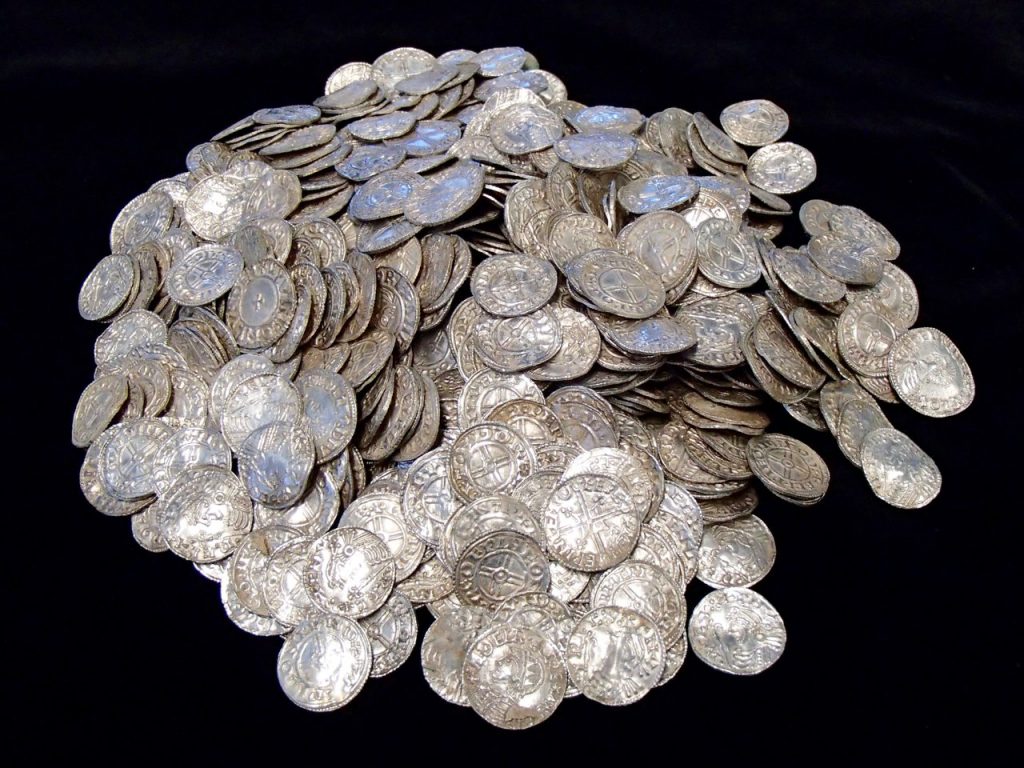Archaeologist Michael Farley will be back at the Society meeting on 24 Apr with the talk “Moats, Mottes and Castles” about the history of conflict and defence in Medieval Buckinghamshire.
The previous talk “Saxon Buckinghamshire”, which he gave on 24 Feb 2016, was very well received by members. Here is the report from the Society Newsletter:

SAXON BUCKINGHAMSHIRE
Peter Borrows reports on a fascinating talk by the retired County Archaeologist.“If anyone lies with a maiden belonging to the king, he shall pay 50 shillings compensation …”
The king in question was Æthelberht, King of Kent (ca. 602), so Mike Farley, talking on Saxon Buckinghamshire, tried to pass over this slide about the King’s laws quickly. But his audience, on a very cold night, would have none of it. Mike, now retired, was formerly the Buckinghamshire County Council archaeologist; he knew his stuff and made it fascinating.
Fifty years ago almost all our knowledge about the Saxon period came from texts – the Venerable Bede, the Anglo-Saxon Chronicles, and various legal documents such as that quoted above. Unfortunately only one such early document makes any reference to Buckinghamshire:
“… in 571, Cuthwulf took four settlements – Limbury, Aylesbury, Benson and Eynsham …”
Such sources are not always reliable; the Domesday Book records 200 churches in Kent but only 7 in Buckinghamshire, which seems improbable. Sometimes place names give evidence of Saxon occupation, eg Dinton derives from Din (a personal name) and ton, a Saxon settlement and Taplow comes from Tæppa (another personal name) and low, a mound. This is apt because his barrow (burial mound) is still easily visible in the grounds of Taplow Court. It was excavated in the 19th century and the drinking horns, glass vessels and other artefacts found there can now be seen at the British Museum.
In recent years the situation has been transformed by extensive archaeological fieldwork. Even so, this has been limited by the underlying geology so that there is very little evidence from the Chilterns, unlike the Vale of Aylesbury. We lie in a gap between the East and West Saxons. Later conquered by the Mercians, there had been speculation that the land was so poor that the Saxon invaders left it to the indigenous Celts.
Most archaeological work these days takes place on green field sites before development – Milton Keynes, for example. The developer pays. Excavations there have so far found about 80 burials, including a ‘thread box’ with a runic inscription. Archaeological work along the line of HS2, if it is built, will cost millions of pounds because in addition to all the as yet unknown sites, the route crosses the Iron Age Grim’s Ditch, Roman Fleet Marston and the abandoned Saxon village of Stoke Mandeville. The latter probably has about 400 burials and with modern techniques for DNA analysis could yield huge amounts of information, unprecedented for this period.
One of the consequences of the arrival of Christianity in England was that the practice of burying the dead with grave goods – weapons, jewels, etc – ceased, leaving much less for the archaeologists to find and date. A map showing the location of finds from the Saxon period is misleading because most are in open countryside (or newly built-on areas) – it is difficult to excavate in the middle of existing villages! However, hedges (as at Monks Risborough) and ridge and furrow marks in fields in various places suggest that village layouts had been formalised by the 10th century. Excavations at Walton (Aylesbury) have uncovered a grinding stone, needles and weights used in weaving. Post holes from two types of houses have been discovered – small ones, built like an A-frame with a ridge pole, about 14 ft x 8 ft, and larger ones more like Beowulf’s ‘hall’. At Westbury remains of a Saxon wooden ladder have been found. And from Amersham? Not much – yet. From Mantles Green Farm, some glass, some human bones – perhaps indicating a cemetery. There was a mint at Buckingham – pennies have been found dating from 917. In 2014 a huge hoard of 5 252 silver coins was found at Lenborough. Most of these date from the reigns of Æthelred and Cnut.
The Aylesbury Museum has launched an appeal to try to purchase the coins. If everybody who was at Mike Farley’s stimulating talk were to contribute £20 to the appeal, that would raise about £1000; if all members of our Society did so, it would raise £10 000. Now that would be a fine tribute to Mike Farley’s talk.
https://www.crowdfunder.co.uk/lenborough-hoard
Peter Borrows
May 2016 Newsletter
